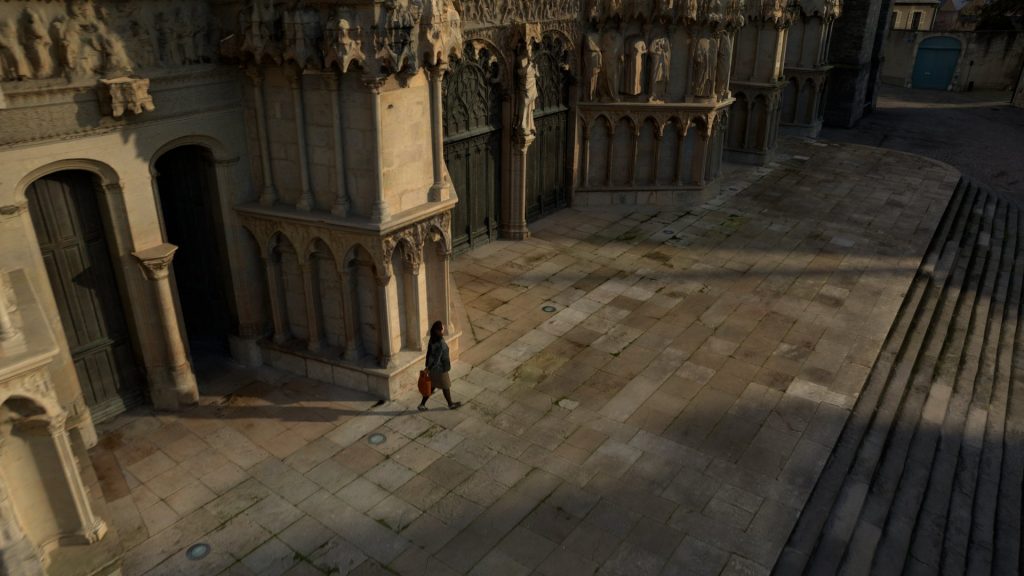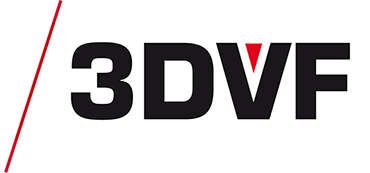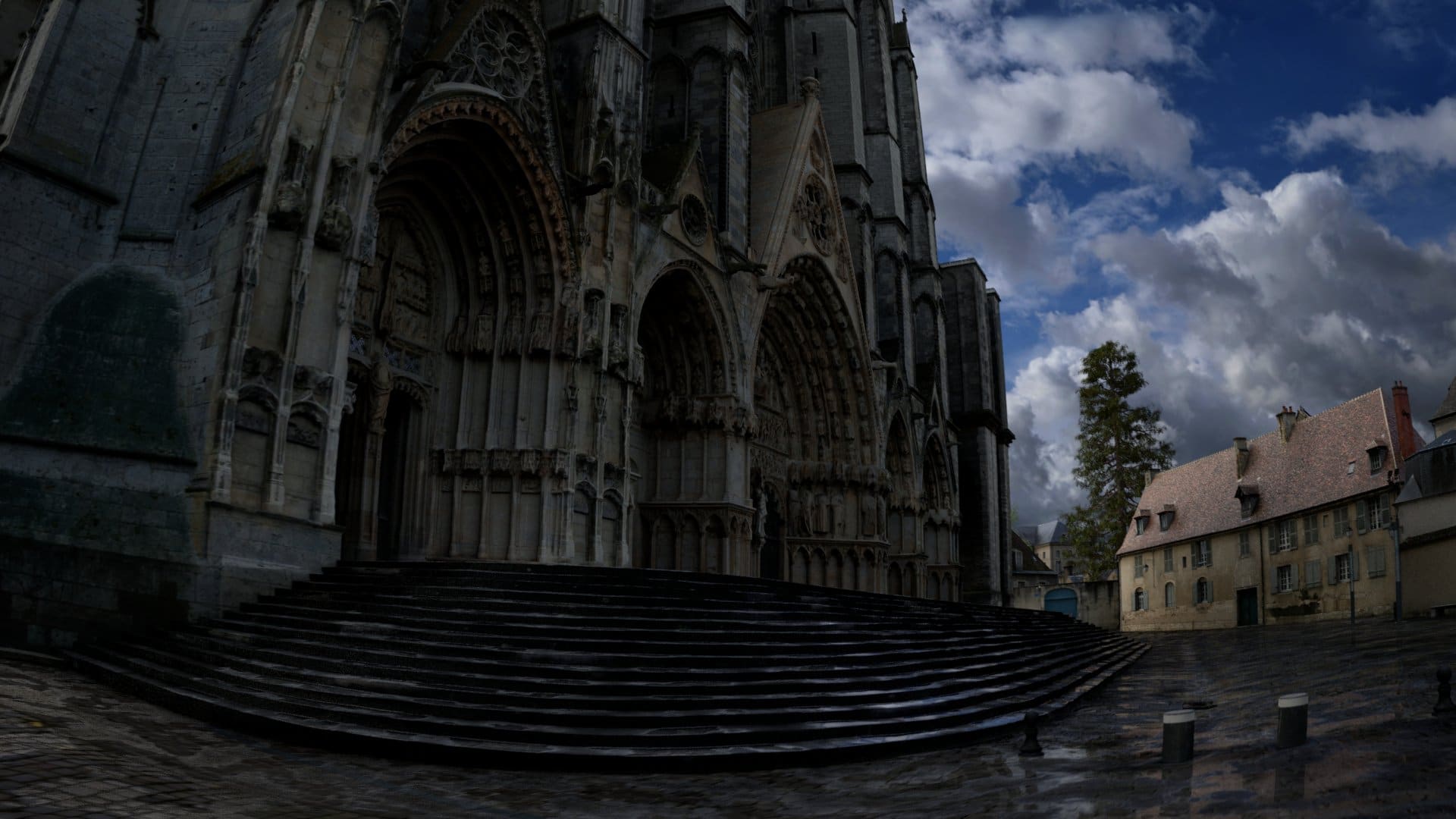This article is also available in:
French
The main problems in photogrammetry are most often solved by complementary shots, I was positively surprised by the good extraction quality of Photoscan’s textures, except for the pavement, which also constitutes a challenge to obtain the 3D mesh, but all this had to be remodeled anyway to reduce the geometry.
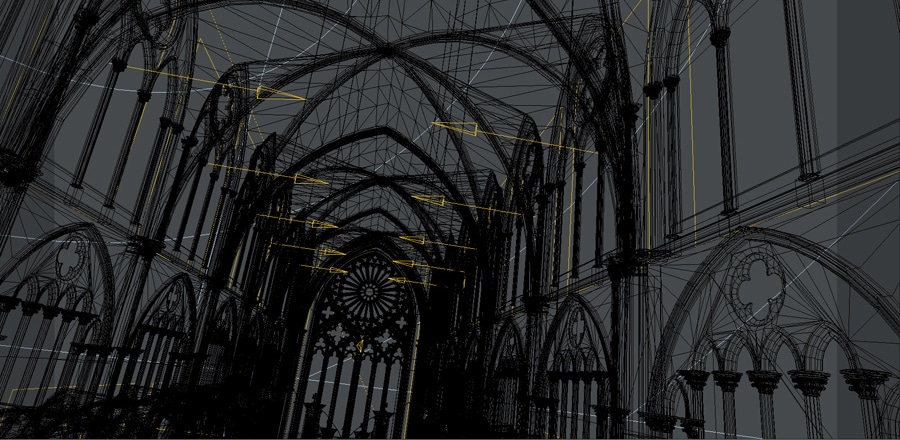
About twenty years ago I was working with one of the first small and very limited digital cameras, to assemble street and house textures on quite simple 3D geometries, but which already allowed me to build complete sets, so I took advantage of all this to straighten perspectives and rectify manually. I wasn’t too seduced by the automatic remeshing or “retopo” techniques, Lightwave sometimes leaves modelers a bit “wanting more”, especially for big models, but never worried me about this work, at the arrival the cathedral “weighed” 2 times less (2.6 Millions of polygons) than a single portal scanned in high resolution.
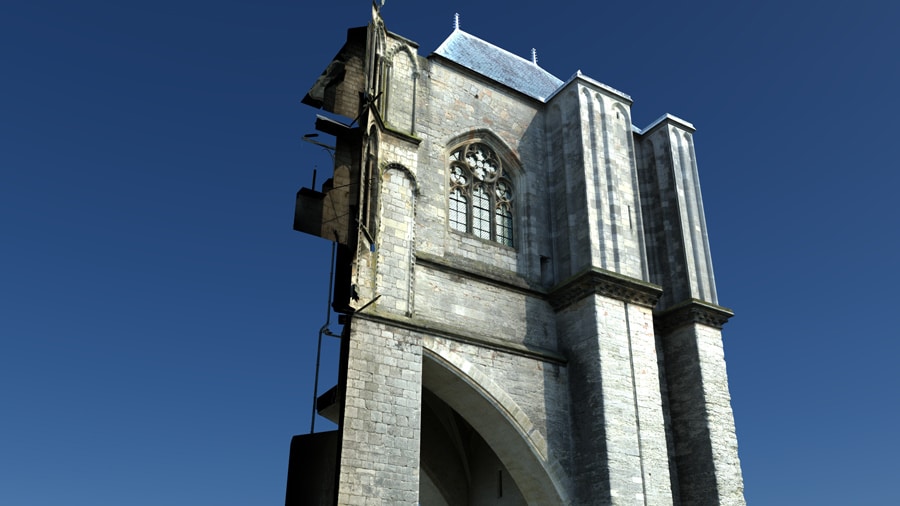
3DVF : What lessons do you learn from these two steps of capturing and then cleaning/optimizing? Are there any steps you would do differently?
No regret, the first blocks served as test to elaborate the method, up to a daylight simulation to get a glimpse of the possible scope of the project. The simple fact of having been able to stage the model in all the desired atmospheres and to have reached the end of the rendering calculation, with limited means and in the time I had estimated, fully satisfied me. It’s certain that with the experience I’ve acquired, I could still save time, but it’s difficult to improve the quality under these conditions, unless I increase the means.
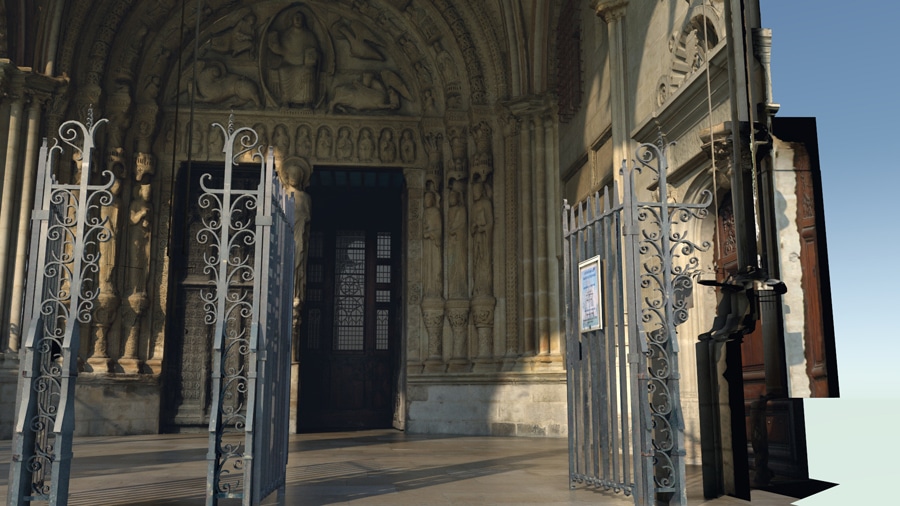
3DVF : For the shooting of real images, you have chosen a discreet shooting spread over time. Why ?
I defined a contemplative approach of my subject, more anecdotal than linear or narrative, a mosaic composed of natural scenes, to decline a fairly classic seasonal scheme, this excluded any staging in real life. Through my benchmarks and my documentation, and the target spaces in conformity with the 3D model, ended up establishing a sort of probability grid, as we can do in an animal film, guessing without cheating too much and being forgotten, a practice already acquired with my experience as a camera operator.
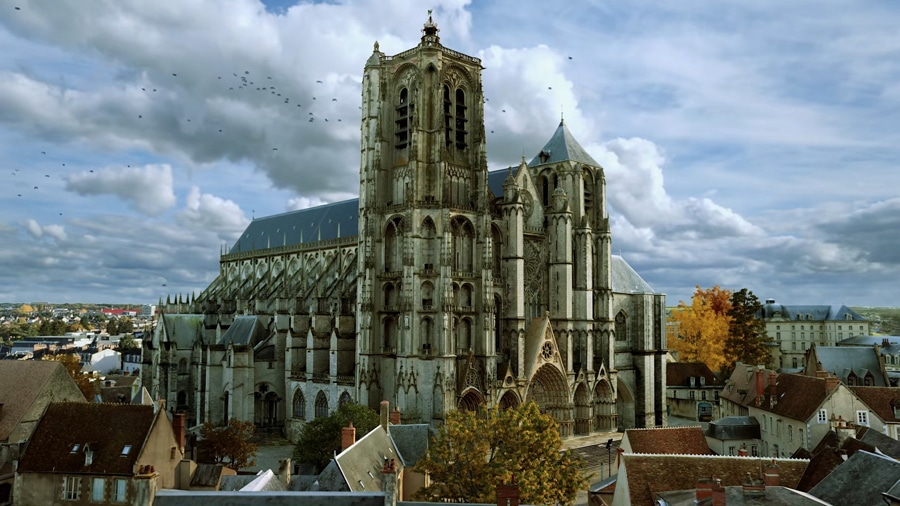
3DVF : Where did the idea of an “animal-totem” come from?
Faced with a religious monument from the Middle Ages, confronted with today’s multicultural society and today’s interest in multiple spiritual practices, it seemed pertinent to me to evoke shamanism for is the origin of sacred. This is evidently a shortcut to situate the point of view of the film, which only superficially evokes history or architecture. With the wink of the kestrel’s eye, one simply observes life all around, one looks at the city like nature, I didn’t have to look very far for the presence of various animals, all potential “totems”, just as it appears to all visitors the presence of an important bestiary in all the gothic imagery of the cathedral.

3DVF : Can you tell us about the rendering phase ?
I hoped to get another machine, but I had to resolve using not other than my i7 (gaming) station, 16Gb of RAM, 24 hours a day, about 1 year and a half, exception made for the last adjustments of the scenes and the integration of the animations that I worked on an old laptop and the special effects in small work sessions. I had three resolutions of textures for each block, depending on the distance, to optimize the memory, seeking to reduce the loading time of the scenes and the duration of the calculation. The global illumination was pre-calculated for the scene with a separate radiosity cache for character animations. I made the video transfers on the same machine, the shots having taken place over a year, I almost respected a parallel between real and virtual and the real “populated” the virtual as they went along.
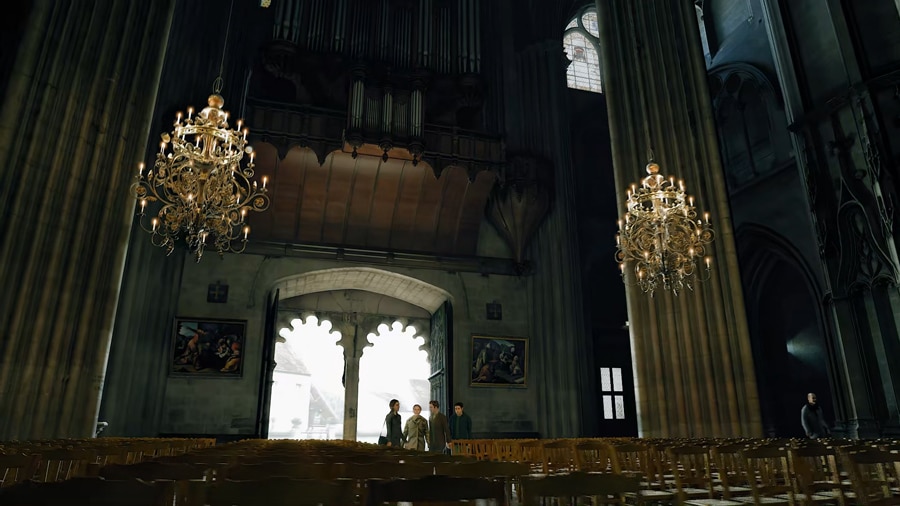
3DVF : Compositing was undoubtedly a key element, since it was about marrying real images and 3D rendering. What were the challenges at this level?
Strictly speaking, there are very few film-CG compositions, a total of 4 shots, with rotoscopy and matchmoving, simulation of the same lighting and the same lens, and also one shot with animated matte painting in the background. For the CG shots representing characters seen in the filmed elements, it was mainly about making or modifying basic models and their skeleton to transfer an animation from a mocap data bank that I had developed with my scripts and plug-ins. Most of 3D sequences were managed in a rather simple way, mainly a “beauty pass” and alpha sequence, quite a lot of masks to reassemble separate passes for large scenes, or modify colors here and there, adjust the characters, a lot of repairs (partial renderings), inevitable when one economize previews, a management of depth for atmosphere or fog. A color-grading was applied before editing the two sources supposed to sequence each other with the same atmosphere.
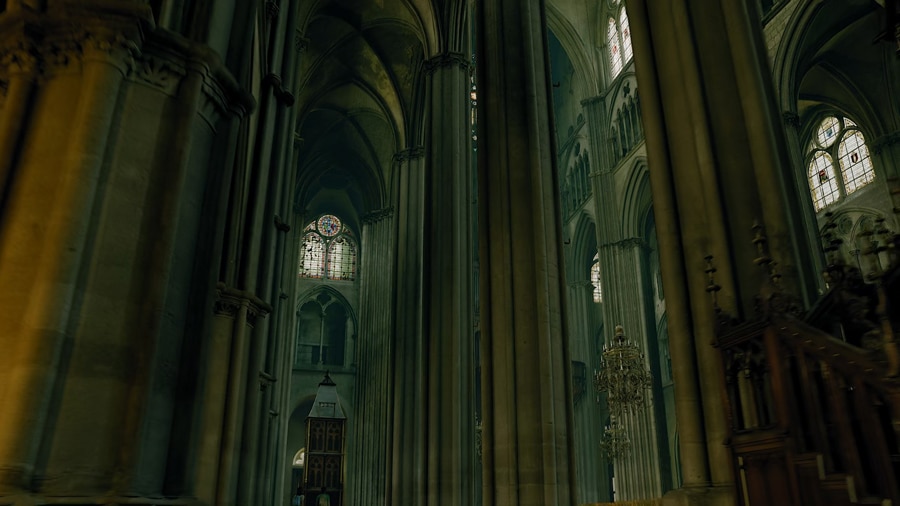
3DVF : On such a project, which required several years of work, the temptation is great to give up, or on the contrary to want to go back over sequences, to never finish the project and to pursue it indefinitely by excessive perfectionism. How did you manage not to “get lost”?
Perfectionism is all relative, except for 2 or 3 very delicate shots where you can talk about relentlessness, though it’s quite common for special effects shots that one consider important. As for endurance, I think that all 3D generalists know and are aware that once the desired quality has been established, it is the homogeneity that must be consistently achieved. Assuming alone all the decisions and carrying out all the tasks on my own is stressful, difficult for me to be objective about efficiency. Apart from the colorimetric calibration issues I have not looked back, thanks to the three years of preparation.

3DVF : What do you hope to leave as an impression on the viewers who will see the film?
First of all, given the length of this medium-length film and its tenuous conductive thread, I will be first happy that viewers will see it in its entirety. I’m looking for communicating very simple emotions standing aside from the current, to say the least, turbulent epoch. I hope they won’t be troubled by the unusual marriage of 3D virtual images, with the real in a documentary, if I succeed to make this felt agreeably, a few moments of grace suspended, as they say, I will have achieved my goal. This film is not institutional, although bizarrely some may have thought so, nor is it conditioned for particular needs. If it makes you want to come and see or visit this monument, I would also be delighted.

3DVF : “The round of the seasons and its animal totem” has received an exploitation visa, and is available in 2K for cinema screening. Where are you in your search for a distributor?
Yes, it can be projected in theaters for all audiences and is now fully accessible on Vimeo. Still looking for a distributor, I pass through the difficulties of presenting this atypical film, as you say, though I think, having seen it myself, that there is an interest in seeing it on the big screen.
For more information
- Denis Pontonnier’s website ;
- Huge thanks to Bob Groothuis for the English translation. You can check out his website here, and he published an interview of Denis Pontonnier with additionnal questions (French/English/Spanish) and exclusive content, such as a 360° render of the cathedral with lots of details.
